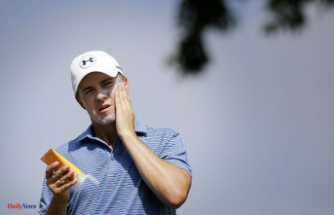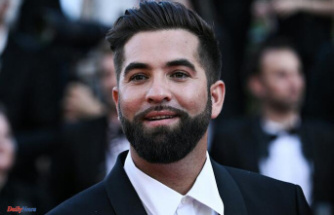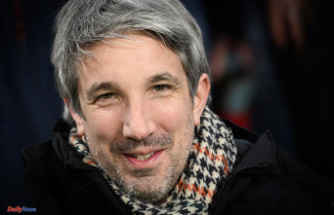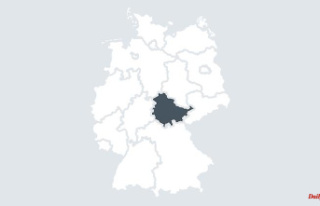Loud colours, bright flowers and summer mood - that's what most people associate with Hawaiian shirts and Hawaii. And that's exactly why the kitschy cult clothes enjoy such great popularity every year. Curiously, it was born in one of the darkest decades of recent history, during the Great Depression of the early 20th century.
Hawaii has only officially belonged to the USA since August 21, 1959, but was already a place of longing for many Americans in the 1920s. And with good reason: white beaches, turquoise waters, Hawaiian orchids, bird of paradise, anthurium and plumeria offer a delightful (mental) escape from recession and unemployment.
It is not known exactly how the shirts were made. It is likely that Japanese tailors in Hawaii began to process the classic kimono fabric for men's shirts. Accordingly, Japanese motifs such as cherry blossoms adorned the shirts. The Hawaiian flora followed later. And for a good reason.
In the 1920s, the shirts were also reserved for wealthy tourists and locals, because normal workers could not afford family vacations in Hawaii. It's still the same today, but what changed was the Aloha shirt. True to the motto: If you don't come to me, I'll come to you, it conquered the US mainland.
We owe this to Ellery Chun, who from the mid-1930s mass-produced the first Hawaiian shirts, shipped them to the USA and thus paved the way to success. Even then they caused a stir: As thesmithsonian.com reports, the Los Angeles Times recommended that buyers of Hawaiian shirts buy two or three at once, because the wife and daughter will definitely want to wear one of the colorful shirts as well.
Despite all cheap provocations, the Hawaiian shirt prevailed. Why can only be guessed at. But it stands to reason that it was due to the male celebrities who were ahead of their time and were not afraid to show their colors as men. In the 30s, these included singer Bing Crosby and Duke "The Big Kahuna" Kahanamoku, three-time Olympic swimming champion and one of the founders of surfing. Both conveyed one thing above all: the irrepressible charm of a man who doesn't have to worry about his masculinity when he's wearing a colorful shirt.
The Hawaiian shirt changed again with the Japanese attack on Pearl Harbor. During the war, the shirts were not produced due to a lack of fabric and when the war was won, the traditional Japanese patterns gave way to Hawaiian plants and nature motifs.
In the 1950s, soldiers who had returned home from the Pacific region made the Hawaiian shirt popular. It is therefore not surprising that the then US President Harry S. Truman (May 8, 1884 to December 1972) had himself photographed in a Hawaiian shirt for Life magazine in 1951.
In the 1960s, the cult item of clothing then experienced its temporary peak. This time, on the one hand, style icons like the King of Rock wrapped themselves in the robe. For example, on the cover of "Blue Hawaii", Elvis Presley wore a dark red Hawaiian shirt decorated with a white floral pattern.
On the other hand, photos of Richard Nixon (January 9, 1913 to April 22, 1994) in the Aloha shirt were also taken during this time. That exudes the charm of the stuffy suburban father who wants to come across as a little more relaxed.
As a result, the breath of courage fled and gave way to the kitsch of a long-forgotten holiday memory that one would rather bury deep in the closet than proudly present it. The big fashion chains then did the same and turned away from the colorful flower patterns.
Hollywood handled the Hawaiian shirt quite differently. From the 1980s to the late 1990s, the rebellious characters of the dream factory wore the colorful shirts. For example Al Pacino in "Scarface", Tom Cruise in "Cocktail", Leonardo Di Caprio in "Romeo and Juliet" or Brad Pitt in "Fight Club", as reported by Vogue.
In the 2000s, surfer labels such as Quicksilver in particular shaped the Hawaiian shirt trend. However, it still took a good 15 years before Italian luxury brands like Gucci jumped on the bandwagon and Hawaiian shirts strolled down the catwalks in Milan, Paris and New York again.
It hasn't become any quieter about the cult piece, on the contrary. Even the Hawaiian shirt itself is not spared a trend and how could it be otherwise: According to Welt, Princeton professor Zara Anishanslin sees the garment as the "fashionable counterpart to the plantation wedding", which "represents the colonialism, imperialism and racism of the USA against the indigenous population symbolize Hawaii".
But that didn't (yet) result in a real outcry against the Hawaiian shirt. Maybe because it just looks too good for that. Or else, because most people see it like year Dale Hope. He is a local Hawaiian shirt maker and author of The Aloha Shirt: Spirit of the Islands. He revealed to Vice that the meaning of aloha is an essence of being, love, peace, compassion and a mutual understanding of respect. And that's exactly what makes the Hawaiian shirt the trend clothes of summer 2022.
Sources: smithsonianmag.com, vogue.de, vice.comwelt.de
This article contains so-called affiliate links. There is more information here.












